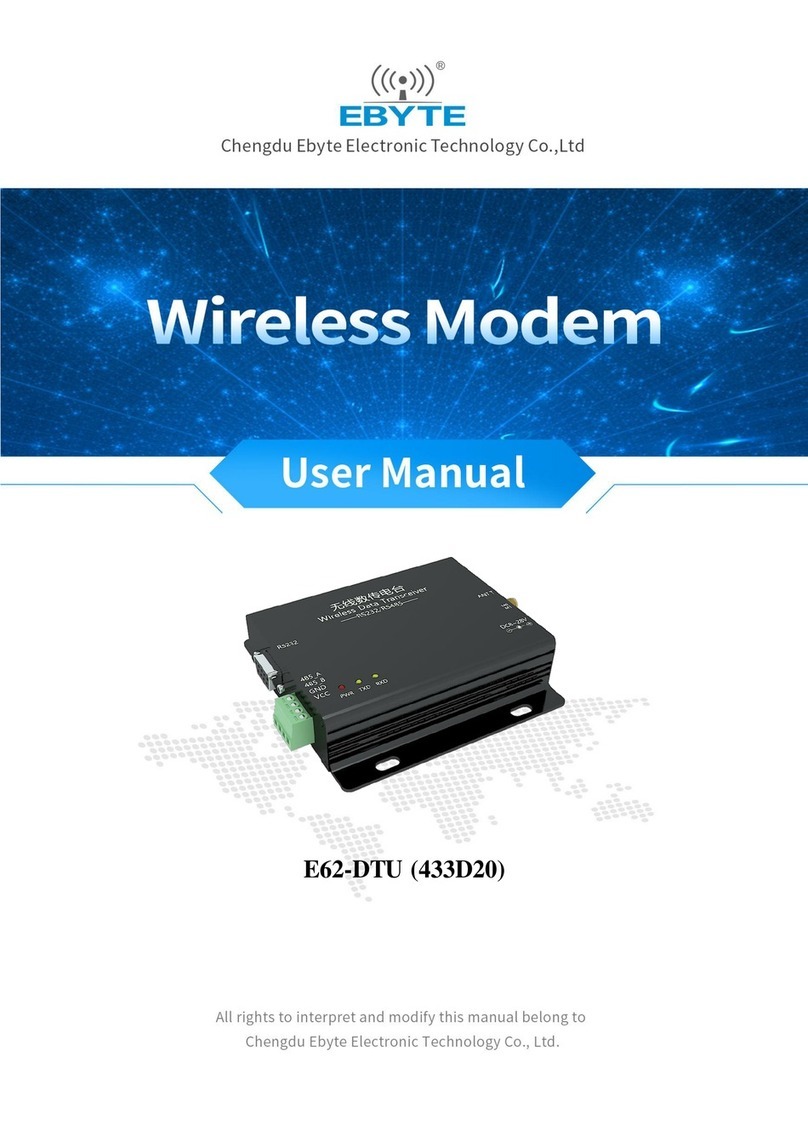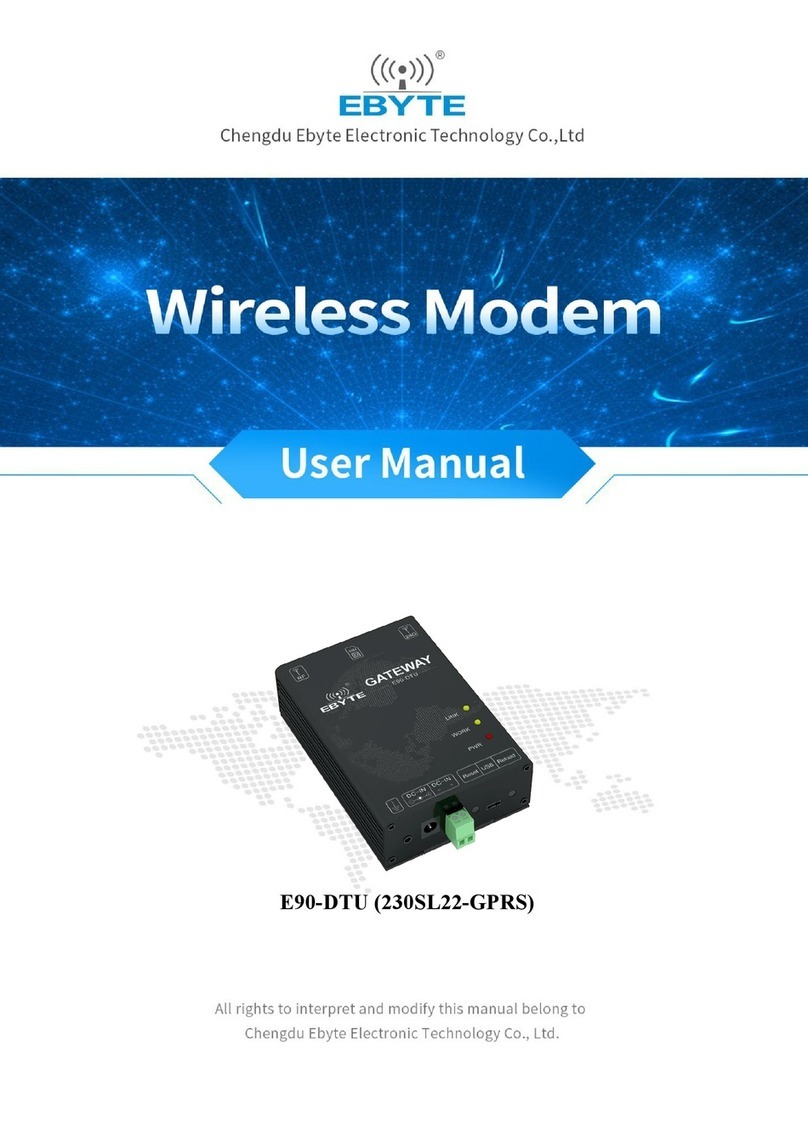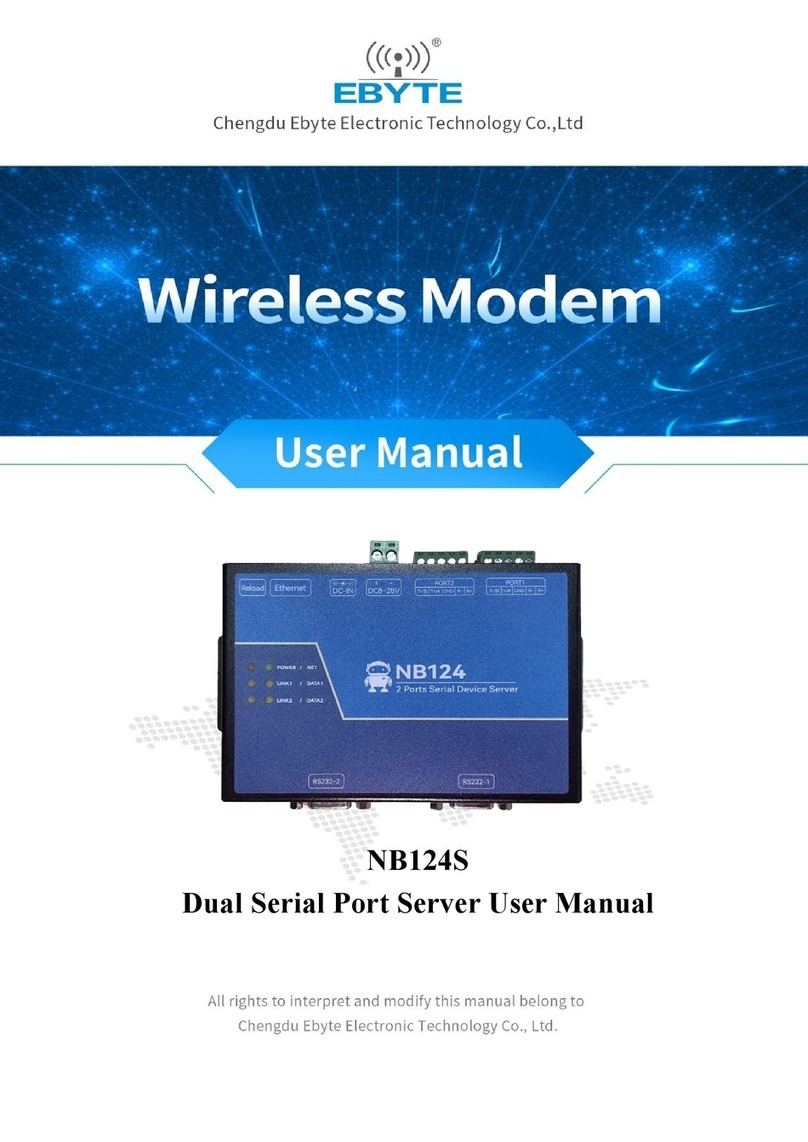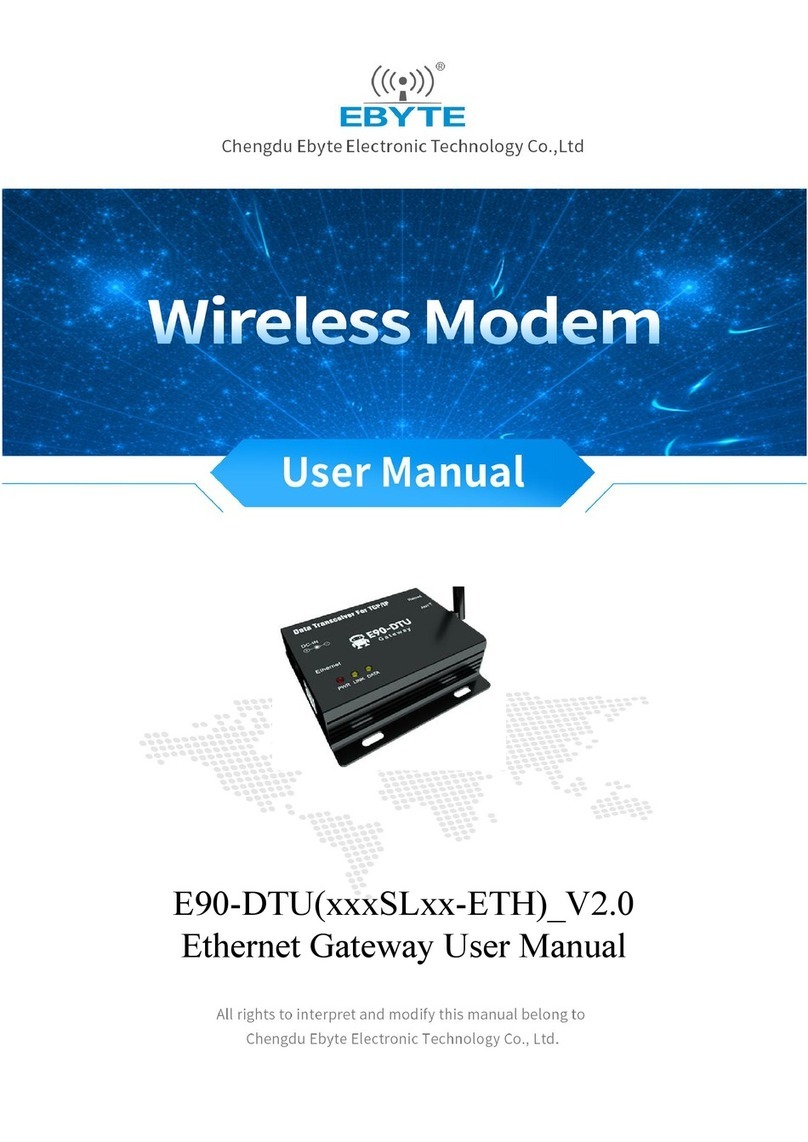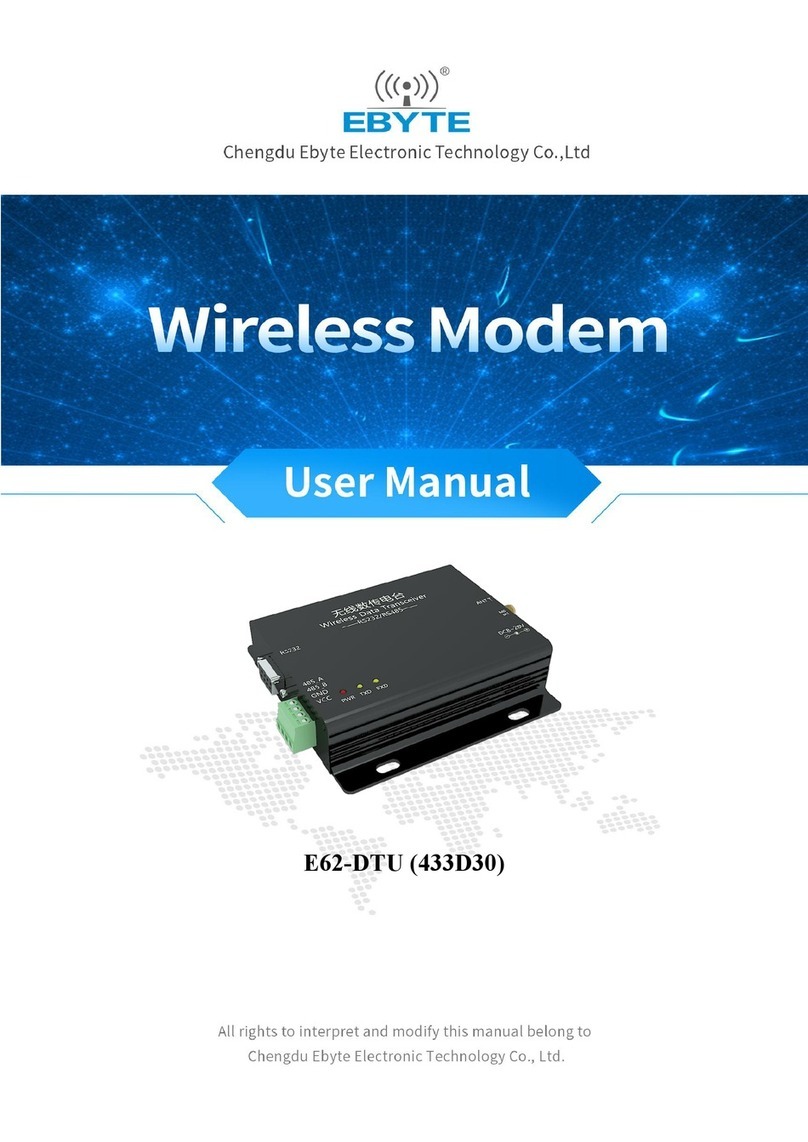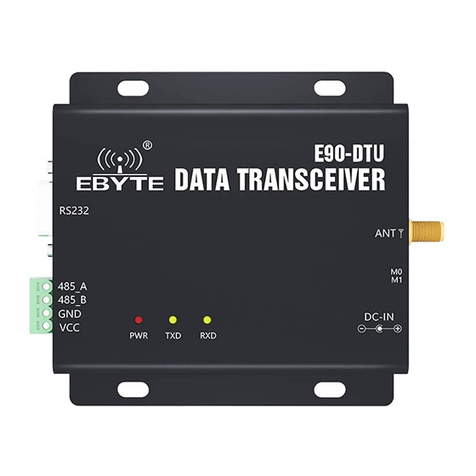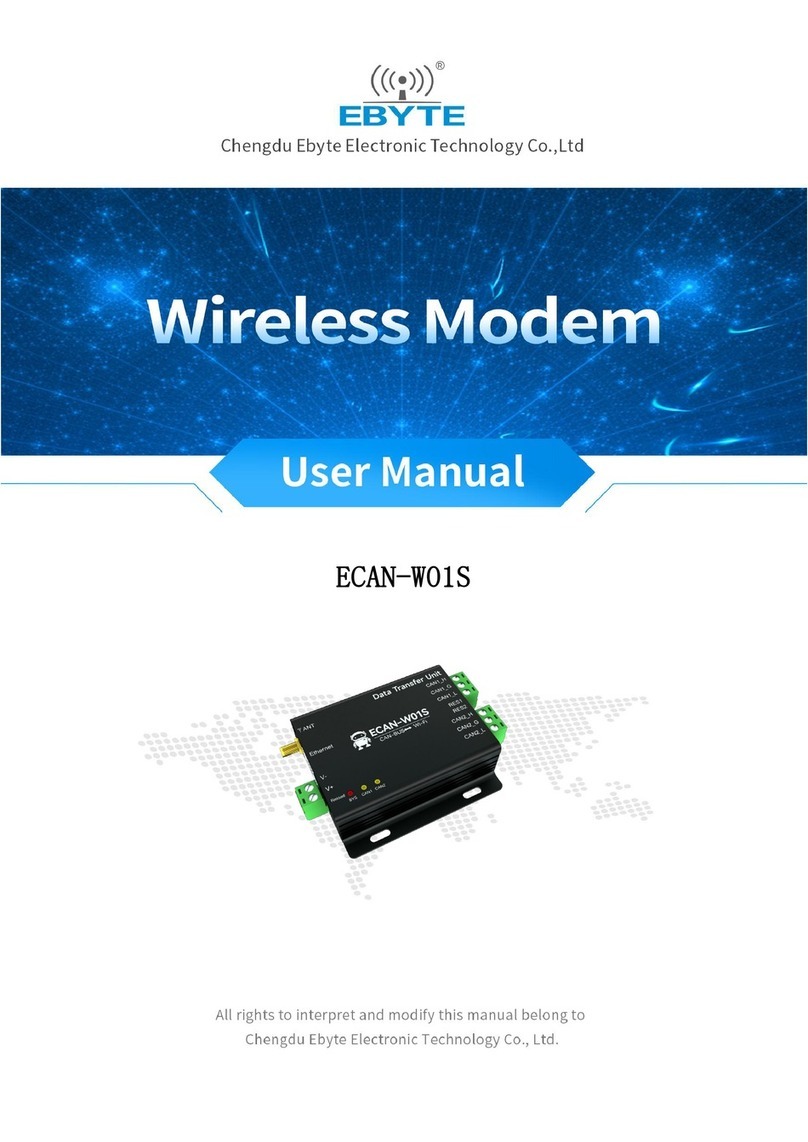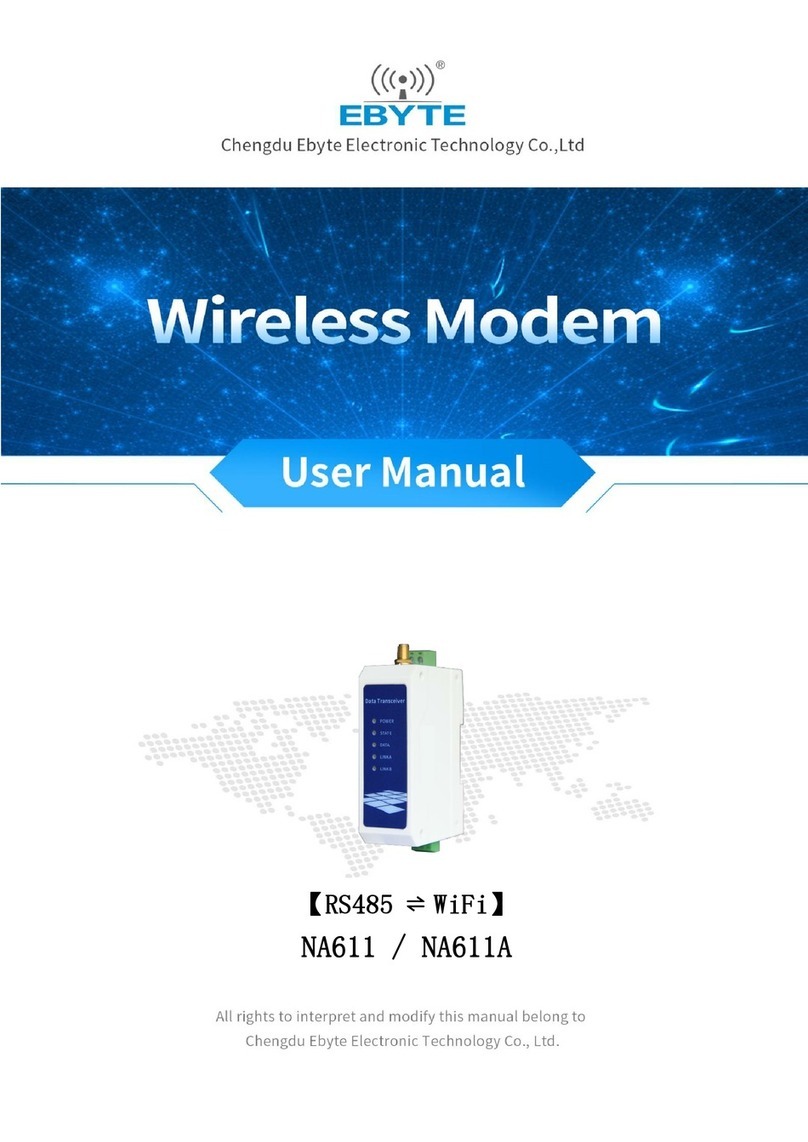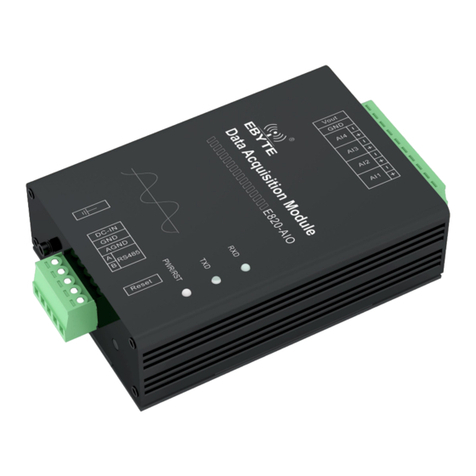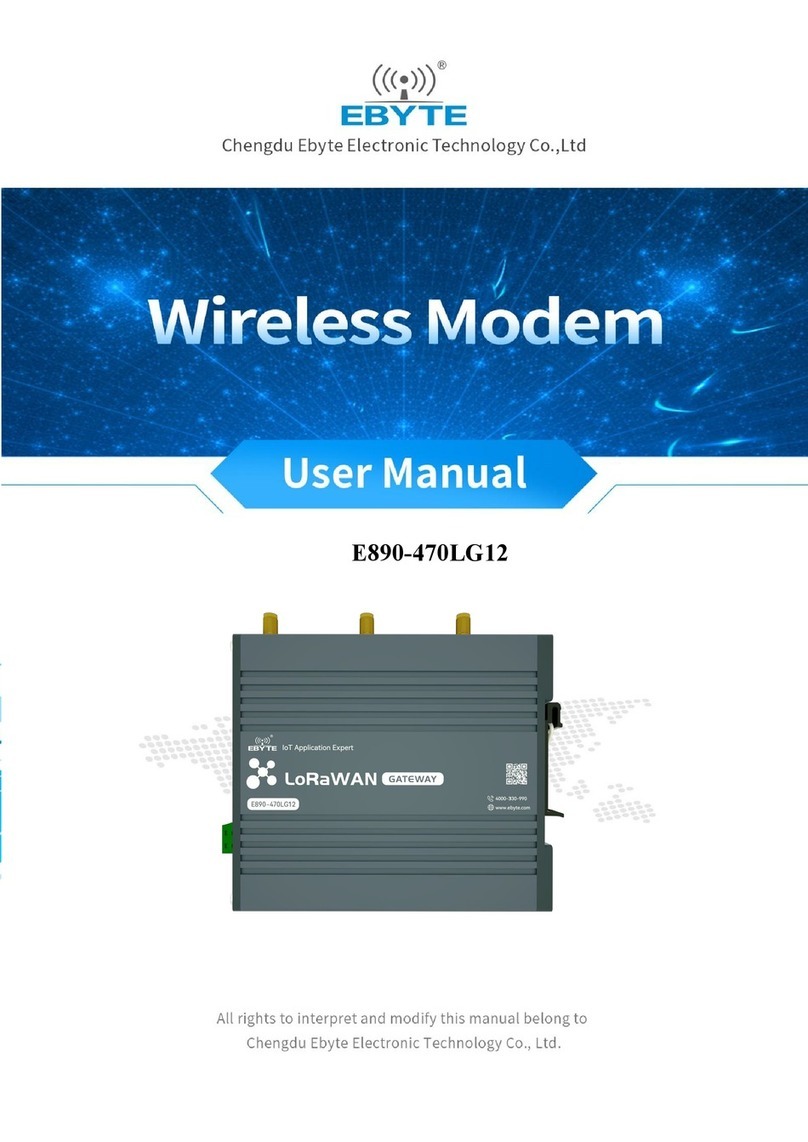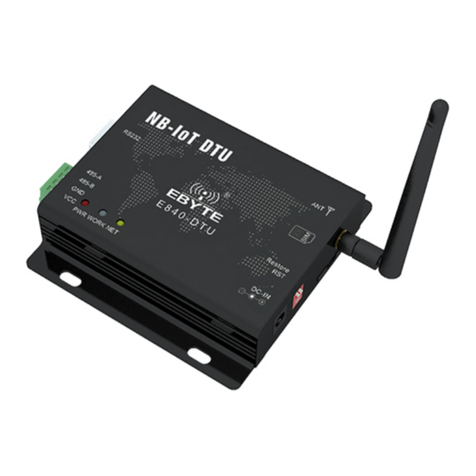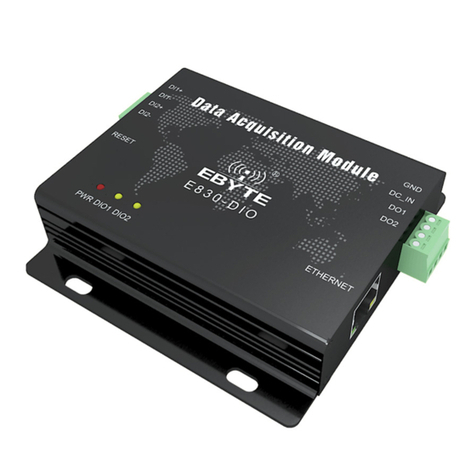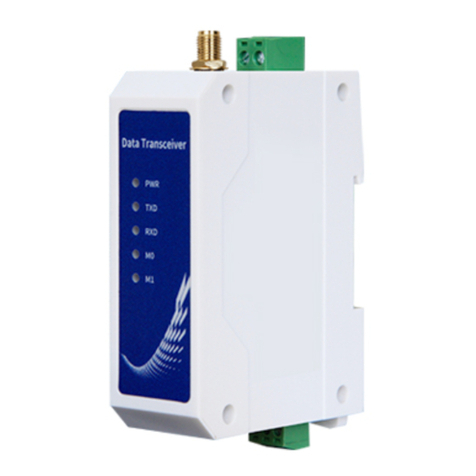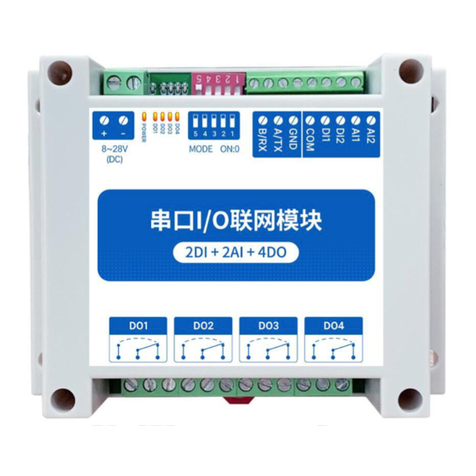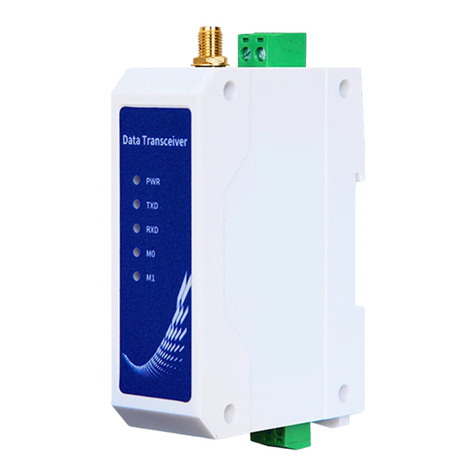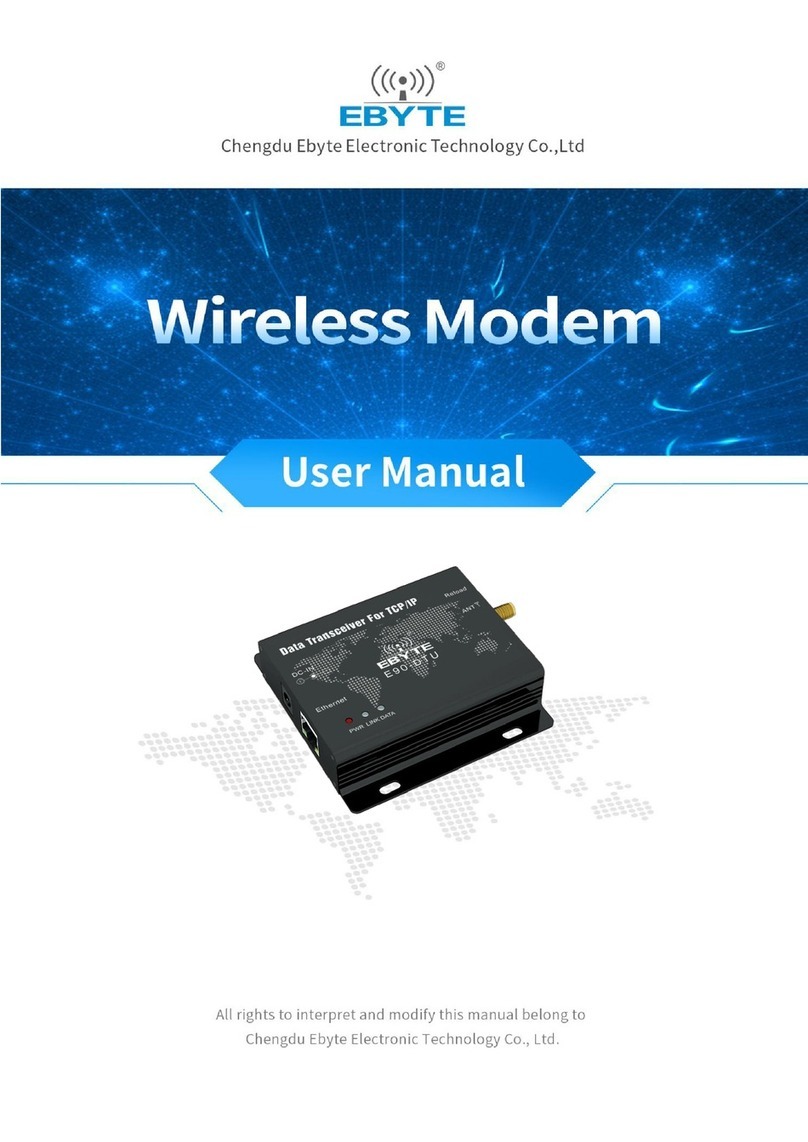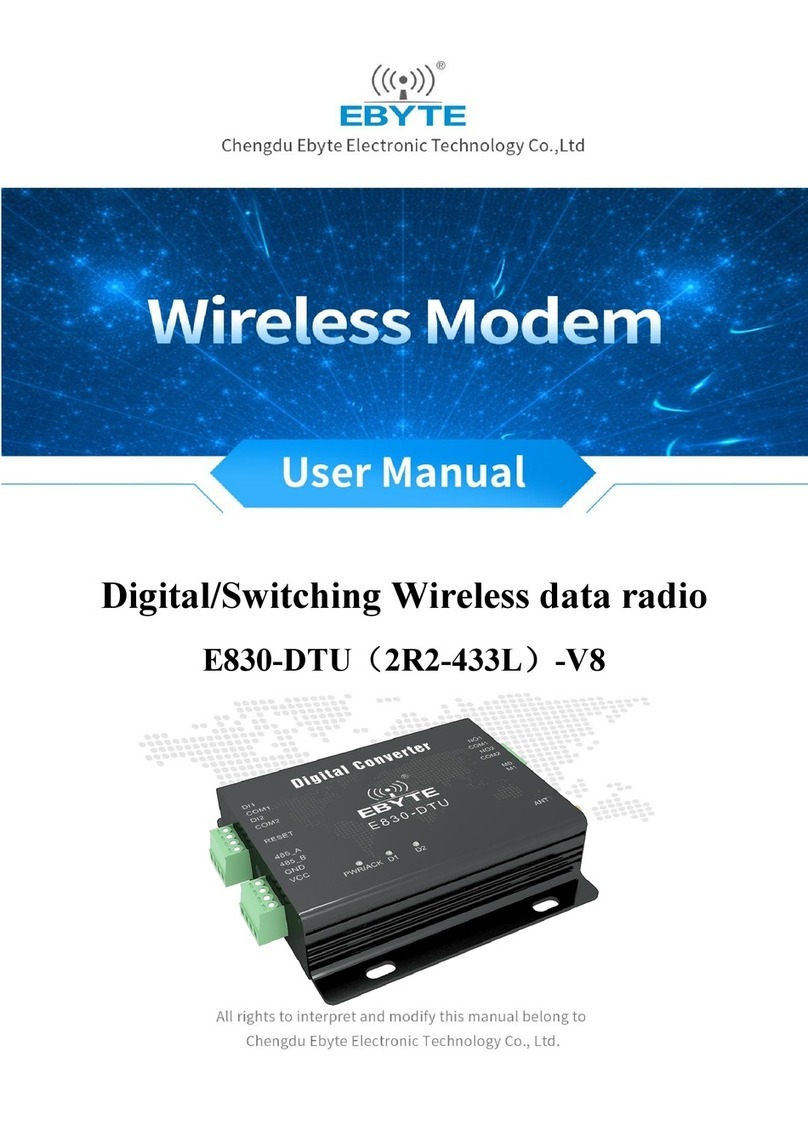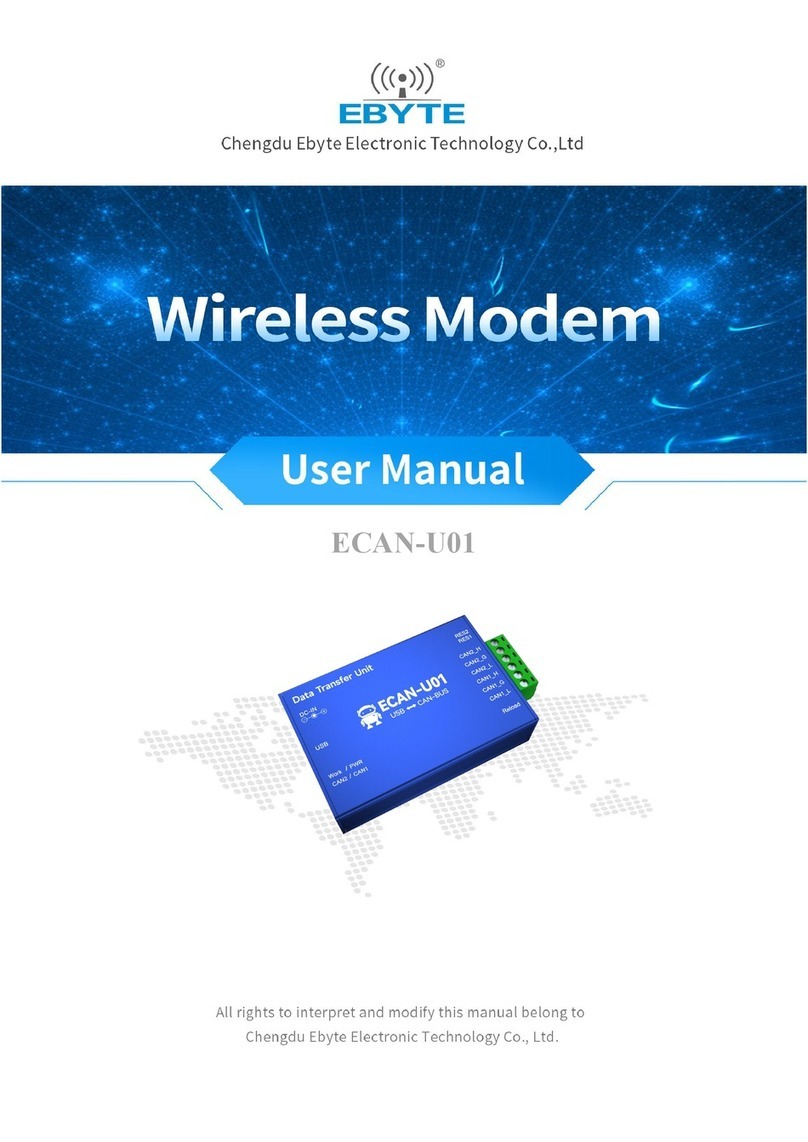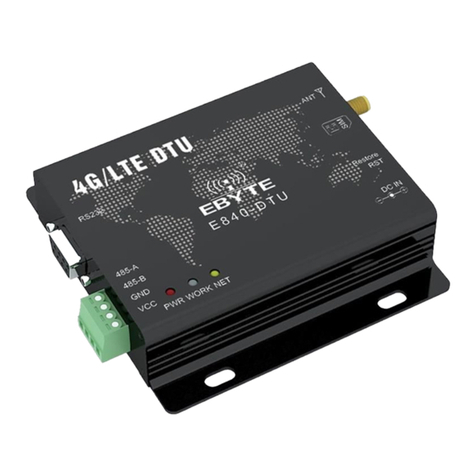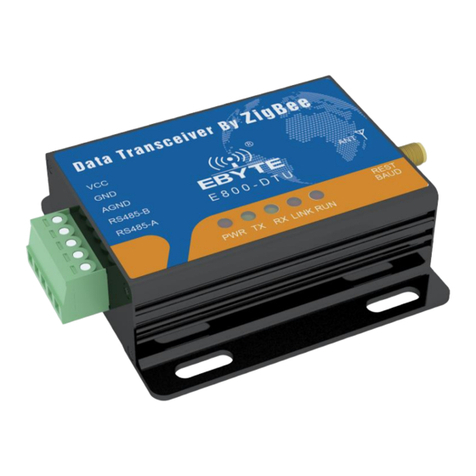
Chengdu Ebyte Electronic Technology Co., Ltd. E870-W1 User Manual
Copyright © 2012 , Chengdu Ebyte Electronic Technology Co., Ltd.
Contents
1. Overview .................................................................................................................................................................... 4
1.1. Product introduction ........................................................................................................................................ 4
1.2. Features ............................................................................................................................................................4
2. Quick use .................................................................................................................................................................... 5
2.1. Equipment preparation .................................................................................................................................... 5
2.2. Device connection ........................................................................................................................................... 5
2.2.1. Connect platform ..................................................................................................................................5
2.2.2. Connect to self-built server .................................................................................................................. 8
2.2.3. AI analog input connection ................................................................................................................ 11
2.2.4. D I digital input connection ................................................................................................................11
2.2.5. Relay output connection .....................................................................................................................11
2.3. Transparent use ..............................................................................................................................................12
3. Technical Parameters ................................................................................................................................................13
3.1. Specifications ................................................................................................................................................ 13
3.2. Mechanical Dimensions ................................................................................................................................ 14
3.3. Interface description ......................................................................................................................................15
3.4. Description of LED indicators ...................................................................................................................... 16
3.5. Serial port description ................................................................................................................................... 17
4. Product function introduction ...................................................................................................................................18
4.1. DO output ...................................................................................................................................................... 18
4.1.1. Level output ........................................................................................................................................18
4.1.2. Following mode ..................................................................................................................................18
4.1.3. Active reporting of status ................................................................................................................... 19
4.2. DI input ..........................................................................................................................................................19
4.3. AI input mode ................................................................................................................................................19
4.3.1. Analog range .......................................................................................................................................19
4.3.2. Active reporting of status ................................................................................................................... 20
4.4. Network transparent transmission mode .......................................................................................................20
4.5. MQTT mode ..................................................................................................................................................21
4.5.1. Ali Cloud ............................................................................................................................................ 21
4.5.2. Baidu cloud .........................................................................................................................................22
4.5.3. One NET Cloud ..................................................................................................................................24
4.5.4. Standard MQTT3.1.1 ......................................................................................................................... 25
5. Special feature .......................................................................................................................................................... 26
5.1. Ebyte Cloud Modbus to JSON ......................................................................................................................26
5.2. Alibaba Cloud Modbus to JSON ...................................................................................................................26
5.3. Edge acquisition ............................................................................................................................................ 26
5.4. Registration package ..................................................................................................................................... 26
5.5. Heartbeat packet ............................................................................................................................................ 26
5.6. Firmware upgrade ..........................................................................................................................................27
5.7. Hardware factory reset .................................................................................................................................. 27
6. Configuration method ...............................................................................................................................................28
